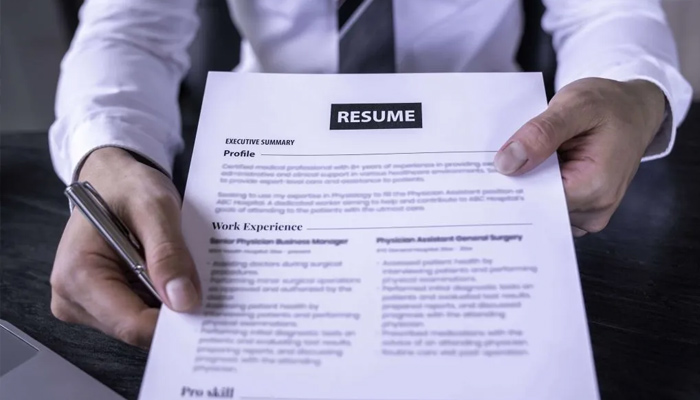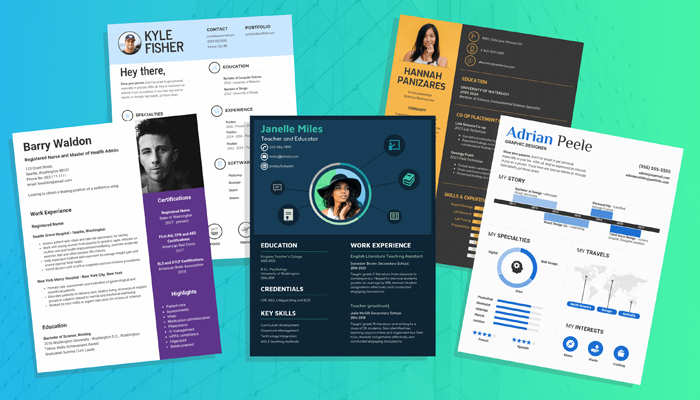
Applying for jobs can feel like a full-time job itself. Between scanning listings, tailoring cover letters and preparing for interviews, one piece of the puzzle consistently makes or breaks your chances: your resume. A strong resume isn’t just a summary of your work history, it’s your personal marketing tool, designed to highlight your skills and show employers why you’re the right fit.
Start with a Clean, Professional Design

Even before an employer reads your words, they view how you have structured your resume. A neat and professional appearance automatically suggests that you are serious about the application. Use a plain font like Arial or Calibri, keep text size at 10 to 12 points and space evenly.
Avoid overloading your resume with colours, graphics or fancy designs unless you’re applying for a creative role that requires it. Recruiters often scan resumes, so clarity and readability are your best friends. A well-structured layout allows them to find the information they need in seconds.
Write a Strong Resume Summary or Objective
The first half of your resume should include a summary or an objective. Your resume summary is preferred if you have some experience, but an objective is better for students, recent college graduates or people changing careers.
Example:
Resume summary: “Results-driven marketing coordinator with 3 years of experience in digital campaigns, content creation, and analytics. Skilled in increasing engagement and driving brand growth.”
Resume objective: “Recent graduate seeking an entry-level human resources position in which I can apply my organizational skills and passion for making teams thrive.”
This short section sets the tone and gives hiring managers a brief idea of who you are.
Tailor Your Resume for Each Job Application

The most effective resume writing tip is to personalize. While it may be easy to use the same resume with each employer, it reduces your chance to impress. Instead, please read the job posting and create a resume that fits their requirements.
If the job posting highlights “project management,” lead with your project experience. If it requests “customer service skills,” lead with those. Tailoring isn’t rewriting your resume from scratch each time, it’s pointing out the most significant skills and experiences for the role.下
Emphasise Accomplishments, Not Responsibilities
Too many people list tasks without showing results. For example, instead of saying:
“Responsible for managing social media accounts,”
Increased social media usage by 45% in six months by creating targeted campaigns and tracking performance metrics.
Employers prefer to hear what you achieved, as opposed to what you did. Wherever possible, translate to numbers, percentages or precise results to back up your worth.
Include Keywords from the Job Description
Most companies now use Applicant Tracking Systems (ATS) to sift through resumes. They look for specific keywords in the job description. Unless your resume has those, it will never pass into human hands.
Read carefully the job ad and highlight or underline repeated words or required skills. Next, naturally weave those keywords into your resume. For example, if the job is “data analysis,” make sure that term is included in your experience or skills sections. This small step can go a long way in getting through the first cut.
Emphasise Skills That Show Career Progress
Your history doesn’t concern employers as much; they care to learn your ability for future career growth. Highlight transferable skills, indicating that you can learn and develop in a new role.
Examples are:
Leadership and teamwork
Problem-solving and critical thinking
Communication and collaboration
Learning new tools and adaptability
When you exhibit a balance of technical skills and soft skills, you are seen as a well-rounded candidate who is equipped with the ability to contribute in more than one way.
Keep Your Resume Short and Sweet

Your resume should fit within one to two pages, even if you have decades of experience. Recruiters may spend less than a minute scanning each resume, so each line counts.
Delete obsolete jobs, unwanted experience or unnecessary details. Focus your attention on the past 10–15 years of work, unless prior experience is directly relevant to the job. This approach makes your resume brief and easier to read.
Use Action Verbs for Impact
The words you use can make a difference in the power of your resume. Starting bullet points with action verbs will make what you have done sound more active.
Some such effective action verbs include:
“Grew,” “Organized,” “Improved,” “Led,” “Created,” “Accomplished,” “Handled.”
Compare the difference:
Weak: “Was responsible for team meetings.”
Strong: “Organized and led weekly team meetings to improve project communication.”
This small adjustment can make your resume stand out from others.
Add Relevant Education and Certifications

If you’re early in your career, your education section may be near the top of your resume. If you’re more experienced, it can go toward the bottom. Either way, include relevant degrees, certifications, or training.
For example:
Bachelor of Science in Computer Science – University XYZ
Certified Project Management Professional (PMP)
Google Analytics Certification
Certifications and training programs show that you’re committed to learning and staying updated in your field, which signals career growth potential.
Don’t Forget About the Small Details
Little details can have a big impact on your job application. Double-check your contact information, ensure there are no typos and format everything consistently. Even one small mistake can make an employer question your attention to detail.
Also, a good idea is to save your resume as a PDF (unless otherwise specified) to preserve formatting across different devices. Utilize a descriptive, clear filename like resume-jane-doe-marketing.pdf instead of something plain like resume123.pdf.
Bring Your Personality Through Without Overdoing It
Though professionalism is all-important, don’t be afraid to let a little personality shine through. If you have volunteer activities or hobbies outside of work that relate to the job, put them in. For example, if you’re looking for a non-profit job and you volunteer on a regular basis that can be beneficial to your resume.
This section should be brief and to the point, but it can give employers a sense of who you are beyond job titles.
Proofread and Ask Someone to Review It
Finally, proofread your resume before submitting it. A spelling or grammatical error can leave a bad impression. Reading it aloud or asking a friend to read it can catch errors you might overlook.
A second opinion will also give valuable insight into whether your resume does an adequate job in communicating your strengths and potential for career growth.
Conclusion

How to create a resume that gets more job interviews isn’t about piling onto a sheet all your previous work. It’s about presenting your experience, skills, and achievements in a fashion that’s easy for employers to understand. Whether it’s tailoring every application or highlighting measurable outcomes, these resume writing tips will get you noticed in a competitive job market.
With diligence and practice, your resume can be changed from overlooked to interview-worthy, opening a door to new possibilities.
